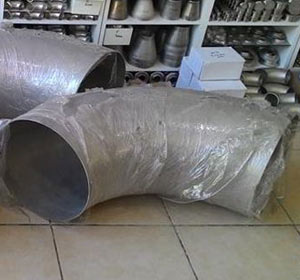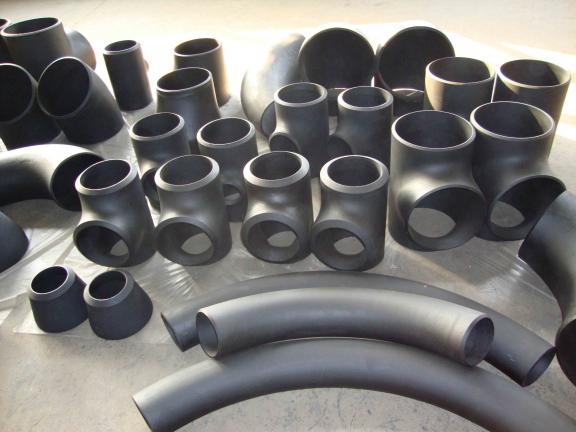- Home
- Company Profile
-
Our Products
-
Stainless Steel Pipe Fittings
-
Alloy Steel Pipe
- Stainless Steel Pipe
-
Carbon Steel Seamless Pipe
-
Carbon Steel Pipe
-
Stainless Steel Tube
-
Carbon Steel ERW Pipe
-
Carbon Steel Tube
-
Alloy Steel Pipe Fittings
- Nickel & Titanium
-
Carbon Steel
- Carbon Steel (CS) Pipes, Tubes
- ASTM A106 Grade A/B Pipes, Tubes
- ASTM A53 Grade A/B Pipes, Tubes
- ASTM A333 Grade 6 Pipes, Tubes
- LSAW Steel Pipes
- API 5L B, X42 – X70 Steel Pipes, Tubes
- S355J2H, S235JRH LSAW Steel Pipe
- ASTM A252 LSAW Piling Pipe
- ASTM A234WPB Buttweld Fittings
- Carbon Steel Pipe/Tube Fittings
- ASTM A105 Carbon Steel Flanges
- ASTM A420 WPL6 Low Temp. Fittings
- Low Temperature CS Flanges
- Alloy Steels
-
Rectangular Steel Pipes, Tubes
-
Square Steel Pipes, Tubes
-
Stainless Steel Tube Fittings
-
Stainless Steel Forged Fittings
-
Carbon Steel Pipe Fittings
-
Carbon Steel Tube Fittings
-
Carbon Steel Forged Fittings
-
Stainless Steel Elbow
-
Carbon Steel Elbow
-
Stainless Steel Tee
-
Carbon Steel Tee
-
Stainless Steel Flanges
-
Carbon Steel Flanges
-
Stainless Steel Reducer
-
Carbon Steel Reducer
-
Stainless Steel Stub End
-
Carbon Steel Stub End
-
Stainless Steel Butt Weld Fittings
-
Stainless Steel Socket Weld Fittings
-
Carbon Steel Socket Weld Fittings
-
Carbon Steel Butt Weld Fittings
-
Steel Pipe Nipple
-
Stainless Steel Fasteners
-
Carbon Steel Fasteners
-
Steel Nut Bolt
-
Steel Angle
-
Steel Channel
-
Steel Beam
-
EN8 Flat Bar
-
EN19 Flat Bar
-
EN31 Flat Bar
-
AISI 4140 Round Bar
-
D2 Round Bar
-
D3 Flat Bar
-
EN24 Flat Bar
-
Carbon Steel Plate
-
Stainless Steel Plate
-
IS 1239 Steel Pipe
-
IS 3589 Steel Pipe
-
Steel Round Bar
-
Steel Sheets
-
Galvanised Pipe
-
Galvanised Pipe Fittings
-
Steel Gate Valve
-
Ball Valve
-
Steel Needle Valve
-
Non Asbestos Sheet
-
Nylon Rods
-
UPVC Pipe
-
UPVC Pipe Fittings
-
Copper Nickel Round Bar
-
Stainless Steel
- Stainless Steel Pipes And Tubes
- Stainless Steel Rectangular Pipes
- Stainless Steel Seamless Pipes, Tubes
- Stainless Steel Welded, ERW Pipes
- SS Electropolished Pipes
- Stainless Steel Square Pipes
- Stainless Steel Capillary Tubes
- Stainless Steel Coiled Tubes
- 316, 316L Stainless Steel and Tubes
- 321/321H Stainless Steel Pipes And Tubes
- Stainless Steel 3105 Pipes And Tubes
- 347/347H Stainless Steel Pipes And Tubes
- 904L Stainless Steel Pipes And Tubes
- Duplex Pipes and Tube Manufactures
- Super Duplex Pipes and Tube Manufactures
- ASTM A312 Stainless Steel Pipes
- ASTM A213 Stainless Steel Tubes
- ASTM A249 Stainless Steel Tubes
- ASTM A269 Stainless Steel Tubing
- ASTM A270 Stainless Steel Tubing
- Polished Pipe – ASTM A554
- 310/310S Stainless Steel Pipes & Tubes
- SS 304/304L Blind Flanges
- SS 304/304L Lap Joint Flanges
- SS 304/304L Long Weld Neck Flanges
- SS 304/304L Slip On Flanges
- SS 304/304L Socket Weld Flanges
- SS 304/304L Spectacle Blind Flanges
- SS 304/304L Threaded Flanges
- SS 304/304L Weld Neck Flanges
- SS 304/304L Orifice Flanges
- SS 304/304L Plate Flanges
- SS 310/310H Blind Flanges
- SS 310/310H Lap Joint Flanges
- SS 310/310H Long Weld Neck Flanges
- SS 310/310H Orifice Flanges
- SS 310/310H Plate Flanges
- SS 310/310H Slip On Flanges
- SS 310/310H Socket Weld Flanges
- SS 310/310H Spectacle Blind Flanges
- SS 310/310H Threaded Flanges
- SS 310/310H Weld Neck Flanges
- SS 316/316L Blind Flanges
- SS 316/316L Lap Joint Flanges
- SS 316/316L Long Weld Neck Flanges
- SS 316/316L Orifice Flanges
- SS 316/316L Plate Flanges
- SS 316/316L Slip On Flanges
- SS 316/316L Socket Weld Flanges
- SS 316/316L Spectacle Blind Flanges
- SS 316/316L Threaded Flanges
- SS 316/316L Weld Neck Flanges
- SS 317/317L Blind Flanges
- SS 317/317L Lap Joint Flanges
- SS 317/317L Long Weld Neck Flanges
- SS 317/317L Orifice Flanges
- SS 317/317L Plate Flanges
- SS 317/317L Slip On Flanges
- SS 317/317L Socket Weld Flanges
- SS 317/317L Spectacle Blind Flanges
- SS 317/317L Threaded Flanges
- SS 317/317L Weld Neck Flanges
- SS 321/321H Blind Flanges
- SS 321/321H Lap Joint Flanges
- SS 321/321H Long Weld Neck Flanges
- SS 321/321H Orifice Flanges
- SS 321/321H Plate Flanges
- SS 321/321H Slip On Flanges
- SS 321/321H Socket Weld Flanges
- SS 321/321H Spectacle Blind Flanges
- SS 321/321H Threaded Flanges
- SS 321/321H Weld Neck Flanges
- SS 347/347H Blind Flanges
- SS 347/347H Lap Joint Flanges
- SS 347/347H Long Weld Neck Flanges
- SS 347/347H Orifice Flanges
- SS 347/347H Plate Flanges
- SS 347/347H Slip On Flanges
- SS 347/347H Socket Weld Flanges
- SS 347/347H Spectacle Blind Flanges
- SS 347/347H Threaded Flanges
- SS 347/347H Weld Neck Flanges
- SS 410 Blind Flanges
- SS 410 Lap Joint Flanges
- SS 410 Long Weld Neck Flanges
- SS 410 Orifice Flanges
- SS 410 Plate Flanges
- SS 410 Slip On Flanges
- SS 410 Socket Weld Flanges
- SS 410 Spectacle Blind Flanges
- SS 410 Threaded Flanges
- SS 410 Weld Neck Flanges
- SS 446 Blind Flanges
- SS 446 Lap Joint Flanges
- SS 446 Long Weld Neck Flanges
- SS 446 Orifice Flanges
- SS 446 Plate Flanges
- SS 446 Slip On Flanges
- SS 446 Socket Weld Flanges
- SS 446 Spectacle Blind Flanges
- SS 446 Threaded Flanges
- SS 446 Weld Neck Flanges
- SS 904L Blind Flanges
- SS 904L Lap Joint Flanges
- SS 904L Long Weld Neck Flanges
- SS 904L Orifice Flanges
- SS 904L Plate Flanges
- SS 904L Slip On Flanges
- SS 904L Socket Weld Flanges
- SS 904L Spectacle Blind Flanges
- SS 904L Threaded Flanges
- SS 904L Weld Neck Flanges
-
317L Stainless Steel Pipes And Tubes
-
304/304L Stainless Steel Pipes And Tubes
-
Stainless Steel Pipe Fittings
- ASTM Standards
- Clients
- Contact Us





